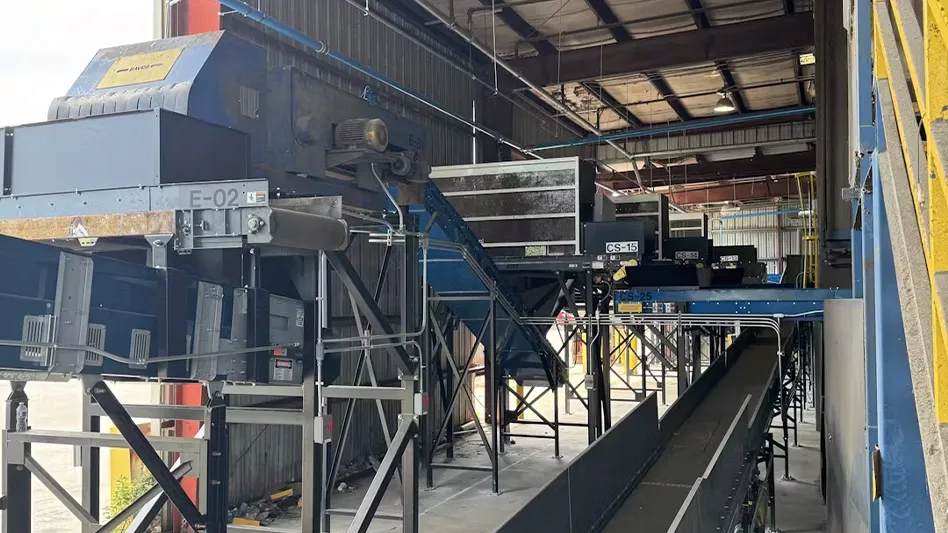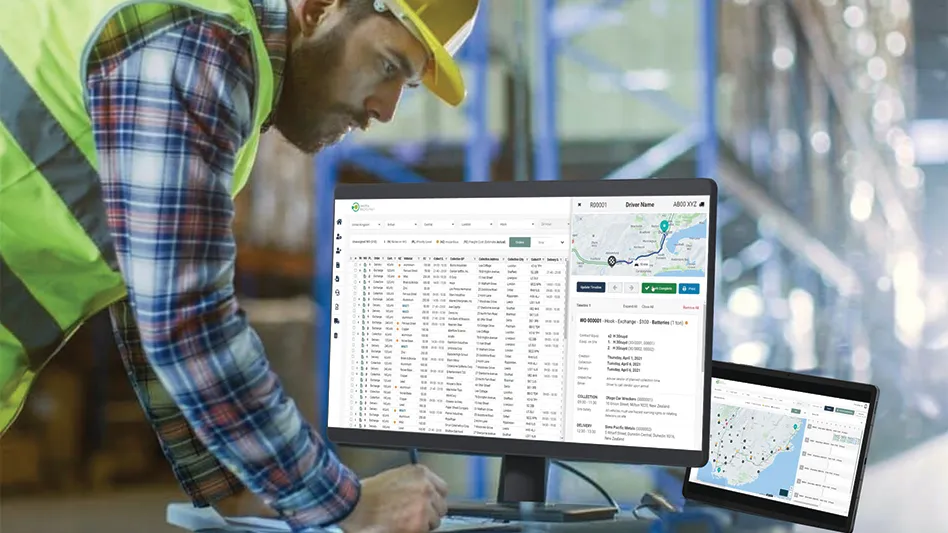
Because of their unique properties, polymers are essential materials in the global economy, finding diverse applications as manufactured goods, including packaging, building and construction materials, textiles, consumer goods, vehicle components, electronics and many others. Global plastics production grew from 2 million metric tons in 1950 to 380 million metric tons in 2015 with a compound annual growth rate of 8.4 percent, according to Brussels-based PlasticsEurope. Similarly, a research article titled “Production, use and fate of all plastics ever made,” published by ScienceAdvances magazine in July 2017, calculated that in 2015, 407 million metric tons of plastics entered into use from global production, whereas the majority (302 million metric tons) exited as waste, contributing 105 million metric tons of plastic in use that year. Rates of waste generation are less than production because most plastic products have in-use lifetimes of greater than one year.
Plastic recycling rates vary widely from state to state in the United States, from a low of 2.2 percent in Indiana to a high of 8.1 percent in Illinois from among the states in Environmental Protection Agency (EPA) Region 5, according to 2019 research from the Michigan Technological University.
In the European Union, among the 30 countries reporting waste and recycling statistics, recycling rates for plastics varied from 18 to 43 percent in 2018, according to PlasticsEurope, with 41.6 percent of plastics being incinerated for energy recovery and 27.3 percent landfilled. Some of this recycled plastic is converted into new products domestically, though significant amounts of separated plastic scrap are traded internationally.
The international trade in plastic scrap recently has been disrupted because of restrictions on the level of contamination that is acceptable in plastic scrap under China’s National Sword Policy and from the Norway amendments to the Basel Convention, according to a report written by Kate O’Neill, associate professor of global environmental politics at the University of California, Berkeley, and published in June in The Conversation. This policy has reduced the quantity of plastic scrap exported from the United States to receiving countries from 0.25 million metric tons in the spring of 2017 to near zero tons in 2019.
Although other Asian countries, such as India, Malaysia, Thailand and Vietnam, have been accepting more of the plastic scrap shipments that have been banned by China, net U.S. exports to all countries decreased from 0.75 million metric tons to 0.38 million metric tons during this period.
Linear versus circular
Currently, plastic products and packaging are produced, used and treated at the end of their lives in a linear fashion. Globally, 79 percent of plastics are landfilled or lost to the environment at their end of lives, 12 percent are incinerated for energy recovery and only 9 percent are diverted into recycling, according to the article “Production, use and fate of all plastics ever made.”
In addition, this pattern of material flow translates to an estimated loss of between $80 billion and $120 billion per year for these wasted materials globally, according to a 2016 report titled “The New Plastics Economy – Rethinking the future of plastics” produced by the World Economic Forum, Ellen MacArthur Foundation and McKinsey & Co. This linear economy relies predominantly on virgin fossil resources in the form of petroleum and natural gas as feedstocks for plastics production and as energy used during the conversion steps.
The linear economy can be visualized using a material flow diagram as shown below. This figure shows the major material flows from virgin feedstock supply, production and use and end-of-life treatments of landfilling, incineration and leakage to the environment.
In addition, this diagram shows the multitude of processing steps in this production, use and end-treatment pathway, including extraction of fossil resources, refinery and petrochemical operations, plastics fabrication, consumer use, waste collection, landfill operations and incineration. Very little activity in recycling exists relative to the linear pathway processes.
By contrast, the circular economy model has more processing activity in materials recovery at the end of life, mechanical recycling and chemical recycling compared with the linear model that has more activity in fossil resource extraction and conventional refining and petrochemical processing.

A conceptual model
A circular economy for plastics will result in major changes to material flows in the global economy, with as of yet unknown effects on energy consumption, economics and emissions of greenhouse gases. Based on a review of prior literature, the New York-based REMADE Institute has found no prior works that studied the entire plastics circular economy using sustainability metrics of material use efficiency, energy intensity, production costs for secondary feedstocks, broader impacts to the economy and life-cycle emissions.
In this exploratory project funded by the REMADE Institute, we will address knowledge gaps, refine a proposed robust systems analysis approach and identify data needs. Our research approach will encompass both U.S. and global perspectives.
We propose that a conceptual model for systems analysis of a plastics circular economy should include a number of features:
- It should link recycled plastics material flows with predictions of economic, environmental and societal impacts.
- It should answer a number of priority research questions and consider policies regarding the current and possible future states of a global plastics circular economy.
- It should be used to investigate possible complementarities between mechanical and chemical recycling.
- The model should aid in decision-making by providing an appreciation for effects of uncertainty.
Simulations are at the center of the systems analysis approach using engineering process models for all the relevant processes in materials recovery, mechanical recycling and chemical recycling. Outputs from the process simulations provide material and energy balance inputs to the techno-economic analyses, environmental life-cycle assessments and societal impact assessments.
A number of sustainability indicators will provide system performance metrics, such as net present value and minimum selling price for the plastic products recycled, global warming potential for all greenhouse gases, fossil energy consumption and direct jobs created. Other indicators, such as regional economic impacts, toxic waste generation and water consumption, will be examined as needed.
The project’s future visions of a plastics circular economy will drive new systems analyses in response to anticipated policy changes, investments in new recycling infrastructure and consumer behaviors.
A number of research questions should be addressed by a systems analysis conceptual model:
- Will a plastics circular economy improve system performance compared with the current plastics linear economy? What are the environmental, economic and societal impacts of a circular model?
- How would the prevalence of chemical versus mechanical recycling versus incineration for energy recovery affect system performance?
- If renewable (i.e., plant-derived) feedstocks increase versus fossil feedstocks, what effects would that have on system performance?
- What impacts could biodegradable plastics have on system performance, including ocean debris effects?
- What possible external effects could be anticipated beyond the plastics pathways, including indirect economic multipliers as well as impacts to the petroleum, gas and petrochemical industries?
Answers to these questions are intended to aid decision-makers in charting a course to a future global circular economy for plastics.
In addition to the research team on this project from Michigan Technological University, Idaho National Laboratory and the American Chemistry Council, an advisory board of experts has been recruited to engage in the project. These experts are from organizations positioned along the recycled plastic value chain: material recovery, plastics recycling associations, petrochemical companies and users of recycled resins.
The board of experts will advise the research team on the technical approaches to the systems analysis research program and peer-review the project’s major deliverables, which are a consensus conceptual model for systems analysis and a final report.
The report will focus on the availability and quality of the necessary plastics recycling process models and databases, environmental life-cycle inventory datasets and data for techno-economic modeling.

Explore the October 2019 Issue
Check out more from this issue and find you next story to read.
Latest from Recycling Today
- Cyclic Materials expands leadership team
- Paper cup acceptance at US mills reaches new milestone
- EPA announces $3B to replace lead service lines
- AMCS showcasing Performance Sustainability Suite at WasteExpo
- New Way and Hyzon unveil first hydrogen fuel cell refuse truck
- Origin Materials introduces tethered PET beverage cap
- Rubicon selling fleet technology business, issuing preferred equity to Rodina Capital
- Machinex to feature virtual tour of Rumpke MRF at WasteExpo





